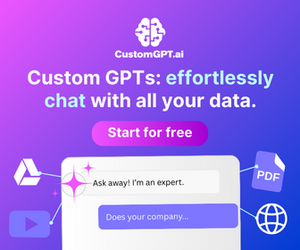-
Table of Contents
Unlocking the Power of AI-Driven Personal Assistants

Artificial intelligence personal assistants have revolutionized the way we manage our daily lives. From scheduling appointments to answering complex queries, these tools are designed to make life easier. However, many people struggle to fully harness their potential. If you’ve been feeling overwhelmed or unsure about how to use these assistants effectively, this guide is for you. We’ll explore practical tips, real-world examples, and actionable strategies to help you get the most out of your AI companion.
Table of Contents
- What Is an AI Assistant?
- Benefits of Using AI Assistants
- Common Challenges and Solutions
- How to Choose the Right Assistant
- Tips for Maximizing Efficiency
- Future Trends in AI Assistance
What Is an AI Assistant?
An AI assistant is a software program that uses artificial intelligence to perform tasks and provide information. These assistants rely on natural language processing (NLP) and machine learning to understand and respond to user requests. Popular examples include Siri, Alexa, and Google Assistant. They can handle a wide range of functions, from setting reminders to controlling smart home devices.
For instance, Amazon’s Alexa can play music, order groceries, and even provide weather updates. Similarly, Google Assistant excels at answering questions and integrating with other Google services. These tools are constantly evolving, becoming more intuitive and capable over time.
Benefits of Using AI Assistants
AI-driven personal assistants offer numerous advantages. First, they save time by automating repetitive tasks. Instead of manually setting reminders or searching for information, you can simply ask your assistant. Second, they improve productivity by helping you stay organized. For example, they can manage your calendar, send emails, and even draft documents.
Moreover, these assistants enhance accessibility. People with disabilities can use voice commands to perform tasks that might otherwise be challenging. Additionally, they provide personalized experiences by learning your preferences and habits. Over time, they become more attuned to your needs, offering tailored suggestions and recommendations.
Real-World Applications
Consider the case of a busy professional who uses an AI assistant to manage their schedule. By delegating tasks like booking meetings and sending follow-up emails, they can focus on high-priority work. Similarly, a student might use an assistant to set study reminders or find academic resources. These examples highlight the versatility and practicality of AI-driven tools.
Common Challenges and Solutions
Despite their benefits, many users face challenges when using AI assistants. One common issue is understanding how to phrase commands effectively. For instance, vague requests can lead to inaccurate responses. To overcome this, be specific and concise when giving instructions.
Another challenge is privacy concerns. Some users worry about data security when using these tools. To address this, choose assistants from reputable companies and review their privacy policies. Additionally, regularly update your device’s software to ensure it has the latest security features.
Case Study: Overcoming Privacy Concerns
A recent study by Pew Research found that 52% of users are concerned about data privacy when using AI assistants. However, companies like Apple and Google have implemented robust encryption measures to protect user data. By staying informed and taking proactive steps, you can use these tools with confidence.
How to Choose the Right Assistant
Selecting the right AI assistant depends on your specific needs. Start by identifying the tasks you want to automate. For example, if you need help with home automation, Alexa might be the best choice. On the other hand, if you rely heavily on Google services, Google Assistant could be more suitable.
Consider compatibility with your existing devices. Some assistants work better with certain ecosystems, such as Apple’s Siri with iOS devices. Additionally, evaluate the assistant’s features and capabilities. Look for tools that offer advanced functionalities like multilingual support or integration with third-party apps.
Comparison of Popular Assistants
- Siri: Best for Apple users, integrates seamlessly with iOS devices.
- Alexa: Ideal for smart home control, supports a wide range of devices.
- Google Assistant: Excellent for search and productivity, works well with Android and Google services.
Tips for Maximizing Efficiency
To get the most out of your AI assistant, follow these tips. First, customize its settings to align with your preferences. For example, set up voice recognition to ensure it responds only to your commands. Second, explore its full range of features. Many users only scratch the surface of what these tools can do.
Additionally, integrate your assistant with other apps and devices. For instance, connect it to your calendar, email, and smart home gadgets. This creates a seamless experience and enhances its functionality. Finally, stay updated on new features and updates. Companies frequently release improvements that can make your assistant even more useful.
Example: Streamlining Daily Tasks
Imagine using your assistant to create a morning routine. It can wake you up, provide a weather update, and even start your coffee maker. By automating these tasks, you can start your day more efficiently. This is just one example of how AI-driven tools can simplify your life.
Future Trends in AI Assistance
The future of AI-driven personal assistants looks promising. Advances in NLP and machine learning will make them even more intuitive and responsive. For example, they may soon understand context better



Leave a Reply